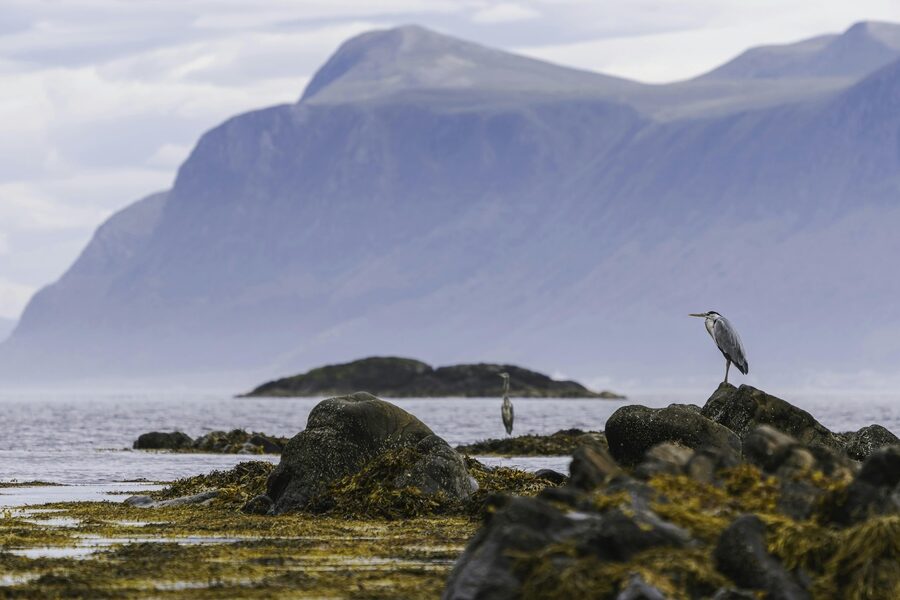Belarus’s mosaic of forests, marshes and wetlands shelters a surprising mix of wildlife that sometimes comes into contact with people and pets. From national parks to edge habitats near towns, knowing which species pose a real risk helps you enjoy the outdoors more safely.
There are 12 Dangerous Animals in Belarus, ranging from Brown Bear to Yellow Sac Spider. Each entry is organized into columns: Scientific name,Danger type,Habitat/Range, so you’ll find below clear, comparable details to assess risk and necessary precautions.
How likely am I to encounter one of these animals while visiting Belarus?
Encounters are uncommon for most species and usually happen when animals are surprised, protecting young, or attracted to food; visits in spring and summer raise chances. Large mammals stick to remote forests while some spiders and snakes can be found near buildings, so situational awareness is the best safeguard.
What practical steps should residents and visitors take to reduce risk?
Keep food and garbage secure, avoid hiking alone at dawn or dusk, make noise on trails, give wildlife plenty of space, and learn basic first aid for bites or attacks. Follow local park rules and report concerning sightings to authorities to minimize danger.
Dangerous Animals in Belarus
| Name | Scientific name | Danger type | Habitat/Range |
|---|---|---|---|
| Common European Viper | Vipera berus | Venomous; medically significant bite, rarely fatal. | Widespread in forests, swamps, clearings, and heathlands across Belarus. |
| Ixodid Tick | Ixodes ricinus | Disease vector; Lyme disease, tick-borne encephalitis (TBE). High risk. | Abundant in forests, tall grass, and shrubs nationwide, especially spring-autumn. |
| Wild Boar | Sus scrofa | Large injurious, aggressive; can charge and inflict tusk wounds. | Common in forests and agricultural lands throughout Belarus. |
| Red Fox | Vulpes vulpes | Disease vector; a primary carrier of rabies. | Widespread in all habitats, including forests, fields, and urban areas. |
| Moose | Alces alces | Large injurious; defensive attacks and vehicle collisions. | Forests, wetlands, and swamps across Belarus. |
| Gray Wolf | Canis lupus | Large injurious, aggressive; extremely rare attacks on humans, rabies vector. | Forests and remote areas throughout the country; population is stable. |
| Common Wasp | Vespula vulgaris | Venomous; painful sting, high risk of anaphylaxis. | Extremely common nationwide, especially near human food sources and dwellings. |
| European Hornet | Vespa crabro | Venomous; painful sting, risk of anaphylaxis in allergic individuals. | Widespread in forests, parks, and gardens, often nesting in hollow trees. |
| Raccoon Dog | Nyctereutes procyonoides | Disease vector; significant carrier of rabies and other parasites. | Widespread in moist forests, river valleys, and wetlands. |
| Brown Bear | Ursus arctos | Large injurious, aggressive; very rare but powerful predator. | Very rare; mainly in Berezinsky Biosphere Reserve and northern Vitebsk region. |
| European Bison | Bison bonasus | Large injurious; can charge if threatened. | Primarily in Belovezhskaya Pushcha and other managed reserves. |
| Yellow Sac Spider | Cheiracanthium punctorium | Venomous; painful bite but not medically significant. | Found in tall grass and vegetation in open, sunny areas. |
Images and Descriptions
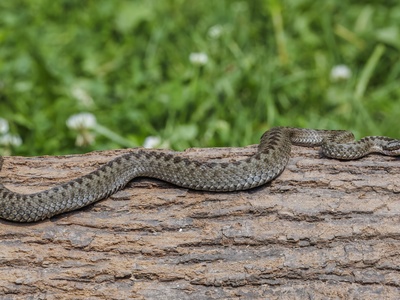
Common European Viper
The only venomous snake in Belarus, identified by a dark zigzag pattern. Its bite is painful and requires medical attention but is seldom fatal for healthy adults. Avoidance is key; wear sturdy boots in grassy areas. If bitten, stay calm and seek immediate medical help.
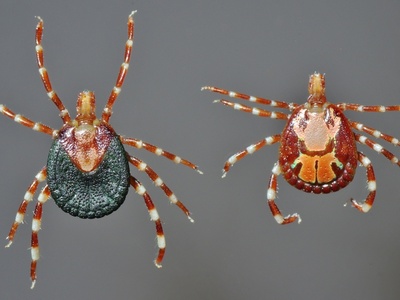
Ixodid Tick
These small arachnids are a major health concern, transmitting serious illnesses like Lyme disease and TBE. Most at risk are hikers and forest workers. Use repellents, wear protective clothing, and perform thorough body checks after being outdoors. Remove ticks promptly and correctly.
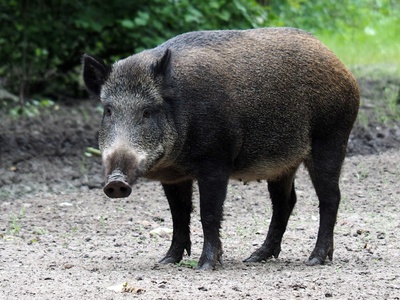
Wild Boar
A powerful and unpredictable animal, especially sows with young. They can charge if they feel threatened, causing serious injuries with their tusks. Keep a safe distance, never corner them, and make noise while hiking to announce your presence. Attacks are defensive, not predatory.
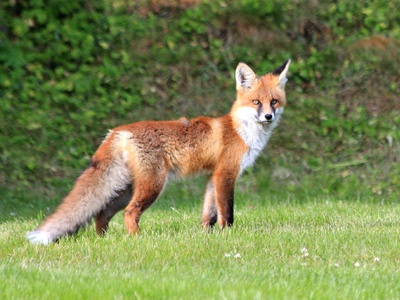
Red Fox
While not typically aggressive, foxes are the main reservoir for rabies in Belarus. A bite from an infected animal is fatal without post-exposure prophylaxis. Never approach or feed a fox, especially one that appears tame or disoriented. Report any unusual fox behavior to authorities.

Moose
This massive herbivore is not aggressive but will defend itself if startled, especially a cow with her calf. Most danger comes from vehicle collisions, which are often fatal. Be extremely cautious when driving through their habitat, especially at dawn and dusk. Give them ample space.

Gray Wolf
Wolves are shy and typically avoid humans. Attacks are exceptionally rare, often involving rabid individuals. They pose a greater threat to livestock. If you encounter a wolf, do not run. Stand tall, make noise, and slowly back away. Rabies is the primary direct danger.
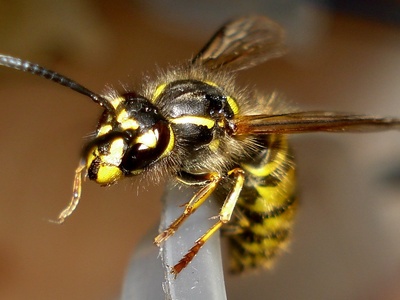
Common Wasp
Often aggressive, especially in late summer when foraging for sweets. Stings are painful and a common cause of allergic reactions (anaphylaxis), which can be life-threatening. Be careful with open food and drinks outdoors. Those with known allergies should carry an EpiPen.

European Hornet
Larger than a wasp, its sting is very painful. The main danger is anaphylactic shock for allergic people or reactions to multiple stings from a disturbed nest. Avoid their nests and remain calm if one is nearby; swatting will provoke it.
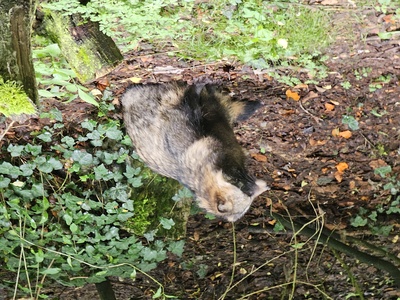
Raccoon Dog
This nocturnal mammal is a major vector for rabies, similar to the red fox. It is shy and avoids humans, but a bite from an infected animal is a serious medical emergency. Avoid any contact and do not approach them, especially if they seem unafraid or sick.

Brown Bear
Belarus has a very small, protected bear population, so encounters are highly unlikely. They can be dangerous if surprised or protecting cubs. When in bear country, make noise to avoid surprising them. An attack would be devastating but is extremely improbable.

European Bison
Europe’s heaviest land animal. While generally placid, these powerful animals will charge if they feel threatened, especially bulls during rut or cows with calves. Always maintain a respectful distance (at least 50 meters) and never get between a cow and her calf.

Yellow Sac Spider
One of the few spiders in Belarus whose bite can be painful for humans. The bite causes a sharp, burning pain, redness, and swelling but is not considered dangerous and resolves on its own. They are not aggressive and bite only in self-defense if pressed against skin.





